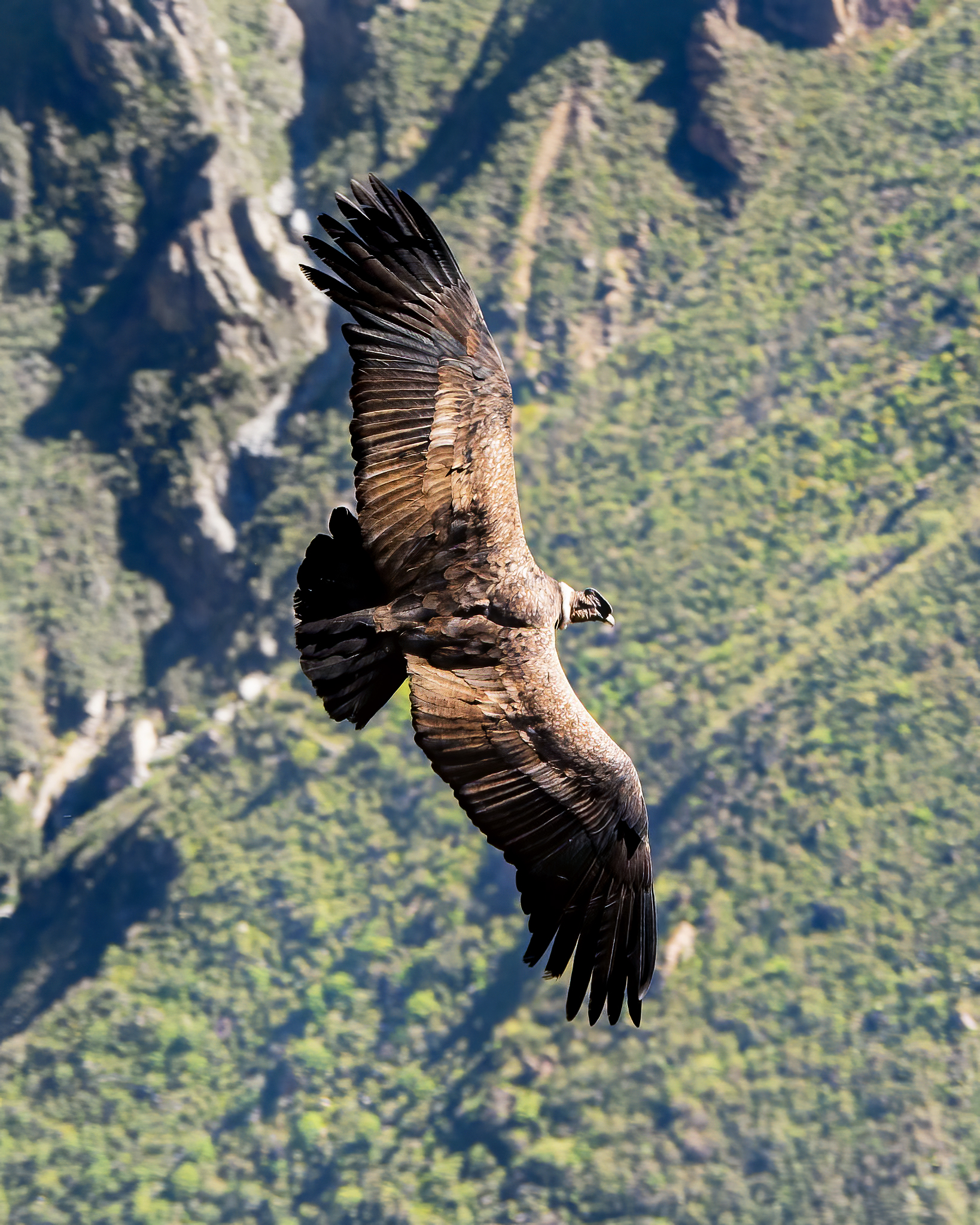Say hello to the world’s largest bird of prey and one of the most impressive animals on the planet – the Andean Condor. With wingspans of up to 3.3 metres and weighing as much as 15 kilos, these captivating creatures are truly a sight to behold.
Like the Black Vultures of Lima that we’ve discussed previously, Andean Condors are scavengers. While they have been observed hunting small animals such as rodents and rabbits, they primarily eat carrion (that’s a fancy word for dead stuff). They often travel more than 200km per day while searching for food. Being such huge birds, they typically prefer large carcasses such as vicuñas and guanacos, and many now rely on domestic animals like horses and cattle as well. Condors in coastal regions have even been recorded feasting on marine mammals such as beached whales and dolphins.
Condors often seek out carcasses by following other vultures which have a better sense of smell (such as Turkey Vultures). These smaller vultures are typically unable to tear open tougher prey as efficiently as a condor, suggesting a kind of mutually beneficial arrangement between species. However, while this is a condor’s preferred method of finding food, they aren’t forced to rely on it, as they also have excellent eyesight, allowing them to spot carrion while soaring hundreds of metres above.
Condors also have complex social structures, ensuring that once they arrive at a carcass, everyone quite literally sticks to the pecking order!

Condors are one of the longest-living birds on the planet, with lifespans of up to 70 years – and they also mate for life!
So what does a female condor look for when making such an important decision? I’m glad you asked.
Male condors have a dull red comb atop their heads, also referred to as a caruncle (an excellent word, which I highly recommend saying to yourself a few times). When displaying for a female, the head and neck of the male flushes, changing from that dull red to a vibrant yellow. As he approaches the female, he inflates his neck and begins hissing loudly. Finally, once he has the female’s attention, he extends his wings and starts hopping around while clicking his tongue.
I know… Hot.
Apparently female condors love this, but I can confirm that female humans just tend to back away slowly with a mixture of fear and confusion – either that or maybe I just haven’t quite mastered the technique yet.

Andean Condors are found right along the length of the Andes, from southern Colombia to the southern tip of Argentina and Chile. A small population is also found in the Santa Marta Mountains on the Colombian/Venezuelan border, but sightings here are extremely rare. The range of Andean Condors used to stretch as far as western Venezuela, however numbers have significantly declined due to habitat loss and human activity.
Andean Condors are considered vulnerable by the IUCN and their populations have been determined to be decreasing, with less than 7,000 remaining in the wild. Their main threats include habitat destruction, hunting from farmers, and poisoning from pesticides. However, one of the other key threats to condors and similar scavengers, perhaps surprisingly, is lead poisoning.
Hunters in condor habitats typically use lead ammunition, and when hunters leave behind their carcasses, condors will swoop in for an easy meal. Sadly, the lead from the bullets enters the tissue of the deceased animal, and from there makes its way into the body of the condor. Condors that feed upon carcasses shot with lead bullets almost always die as a result.
In the US, in an attempt to support the recovery of the critically endangered California Condor, the state of California banned the use of lead ammunition entirely in 2019, as research showed that more than two thirds of condor deaths in the region were attributable to lead poisoning. Calls for similar bans are being made throughout the Andean Condor’s range in South America.

It’s difficult to convey just how massive Andean Condors are. Peruvians are among the shortest people in the world, with an average height of around 1.6 metres. On the other hand, Andean Condors can have wingspans up to 3.3 metres, more than double the height of the average Peruvian!
The photograph above, taken at the Colca Canyon’s Cruz del Condor lookout, attempts to highlight the condor’s enormous wingspan. On the rocky outcrop, one can see dozens of humans watching as the majestic condors soar overhead.
Condors will flap their wings to take off, but after that they’ll barely move, making use of updrafts in order to remain aloft in a motion that looks practically effortless.
To highlight this, I’ll leave you with this video, filmed in the Colca Canyon, as well as a short passage from the greatest naturalist to ever live, witnessing condors in flight for the first time.
“When the condors are wheeling in a flock round and round any spot, their flight is beautiful. Except when rising from the ground, I do not recollect ever having seen one of these birds flap its wings. Near Lima, I watched several for nearly half an hour, without once taking off my eyes: they moved in large curves, sweeping in circles, descending and ascending without giving a single flap… It is truly wonderful and beautiful to see so great a bird, hour after hour, without any apparent exertion, wheeling and gliding over mountain and river.”
Charles Darwin, from The Voyage of the Beagle
–
Andean Condors (Vultur gryphus), Colca Canyon, Peru


